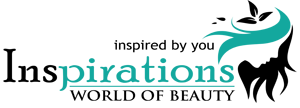Before we dive into this one, let’s first get to understand what Varicose Veins is all about, signs and symptoms of Varicose Veins and some of the common causes of Varicose Veins. Varicose Veins are a common vascular condition that affects about 30 to 50% of the adult population. They are the result of damaged valves in superficial veins.
Varicose Veins can develop anywhere in the body but most commonly appear on the legs. Visual signs of varicose veins include twisted or bulging veins that look blue, greenish or purple depending on one’s complexion, but may also not always manifest in appearance. Other symptoms to watch out for include:
- A heavy, uncomfortable feeling in your legs
- Cramping, especially at night
- Throbbing or aching in your lower legs
- Itching around your veins
- Increased pain after long periods of standing or sitting
- Swollen feet or ankles
Varicose Veins result from weakened or damaged valves within your veins. These valves play an essential role in helping your veins return blood to your heart as it circulates through your body.
For this gravity-defying process to work, muscles in your legs need to contract, pushing the blood upwards. As the blood travels, tiny one-way valves open to let the blood flow to your heart, then close to keep it from flowing backward and pooling in your legs.
However, if these valves malfunction, the blood pools, increasing pressure in the vein and causing it to bulge, stretch or twist in the form of varicose veins.
Over time, this buildup can eventually weaken the walls of the vein, forcing blood to leak out of the vein and into the surrounding skin. This causes the skin to turn brownish-black, lose its suppleness, and eventually become hardened as a result of scar tissue.
Massage and Varicose Veins
Research has it that one needs to consciously do massage to avert the on set or once they develop varicose veins. When consciously done, massaging the legs can bring relief to achiness caused by varicose veins. The massage can help reduce swelling through different techniques and stretching of the skin on the legs and the legs themselves.
In such scenarios as with mild varicose veins, and where it is advisable to massage your own legs, it is important to massage the skin towards the heart. Best benefits may be achieved where it is possible to massage each leg for five minutes daily. However, it is important to note that this is only recommended for people with mild cases.
For better results, it is advisable to use Essential oils during this massage. However, it is important to note that there are particular Essential oils with health benefits for varicose veins. Using the specific Essential oils, a massage can promote better circulation in the body, especially the legs where most varicose veins appear. Some massage therapists will massage above and below the varicose veins, while others will still massage the veins, but will do so very gently and carefully.
Manual lymphatic drainage, which is a type of massage, gently helps the natural drainage of the lymph system, by pushing the lymph fluid in the desired direction. Therapists use this method of massage to move lymph fluid out of a congested area and circulate it back to the center of the body, they do this extremely gently so small vessels are not shut down. They are also extremely careful when doing these massages and do not put direct pressure on the varicose veins; direct pressure on the veins will not only hurt, but it could cause further damage to the already diseased vein.
When a Massage Isn’t Enough
Massages are usually good for people prone to Varicose Veins as well as those with a mild case of Varicose Veins. In which case, massage is highly recommended for people at high risk but have not yet developed varicose veins.
This is because the movement of the skin in the legs can improve circulation and vein health. However, where the varicose veins have already developed and are beyond the mild stage or if a patient has extreme pain, vein ulcers, or severely inflamed veins, a massage will not be enough; in fact, the massage may cause more harm.
Massages are not a cure for varicose veins but a good way to cope with the pain and prevent their occurrence. But important to note is that once they appear, most of the time massage will bring temporary relief.
Most of the time, they will only bring temporary relief. If massaging isn’t working or is not an option, talking to a medical professional about varicose treatment is the best, next step.
To learn how you can adequately treat and or remove varicose veins, visit a vein specialist who will answer all the questions you have about varicose veins and can help you decide which treatment is best for you
Otherwise, it is good practice and of more health benefits to do regular massage to keep your veins in good health in order to avert or delay the onset of Varicose Veins.




